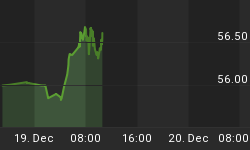As Apple starts selling its new smart watch there are some, well, crazy-sounding predictions circulating about the amounts of gold the company might soon be buying. The math goes like this: Each gold version of the watch will contain around two ounces, and the company might sell 10 million of them a year, mainly to rich, tech-savvy Asians.
That would be 20 million ounces a year, at 29,000 ounces per ton, which comes to around 700 tons. Since the world's gold mines produce maybe 2,500 tons per year, Apple would, with the introduction of this one product, buy more than fourth of global production and would jump to number three on the gold consumption list, behind only India and China. Pretty amazing, and on the surface extraordinarily good for gold prices.
But Apple of course is just the middle man. It's buying gold, turning it into jewelry and selling it. So the buyer of the watch is really the gold consumer. And here you get into some overlap. Since Chinese and Indians already buy a lot of gold in the form of jewelry and bullion, will iWatch buying crowd out this other demand, or will it be coming from different groups within these societies?
In India, for instance, will an iWatch be an acceptable wedding gift instead of traditional gold jewelry? And, assuming that some buyers are people of means who might otherwise have considered different gold watches, how much of the new demand is just substitution within an already existing market?
It will take a couple of years to find the answers, but in the meantime it's safe to hazard a general guess:
Some purchases of iWatches will replace other gold buying, but not all. The market for this kind of technology skews way younger than for traditional jewelry or luxury watches. The small screen alone argues for young eyes. So the iWatch won't be seen as a form of savings but as something to be used and flashed around daily -- and then traded in for even cooler tech a few years hence.
In other words, even if the level of substitution turns out to be very high, it won't be 100%. So "luxury wearable tech" is definitely a net plus for gold. The question is how big a plus.















